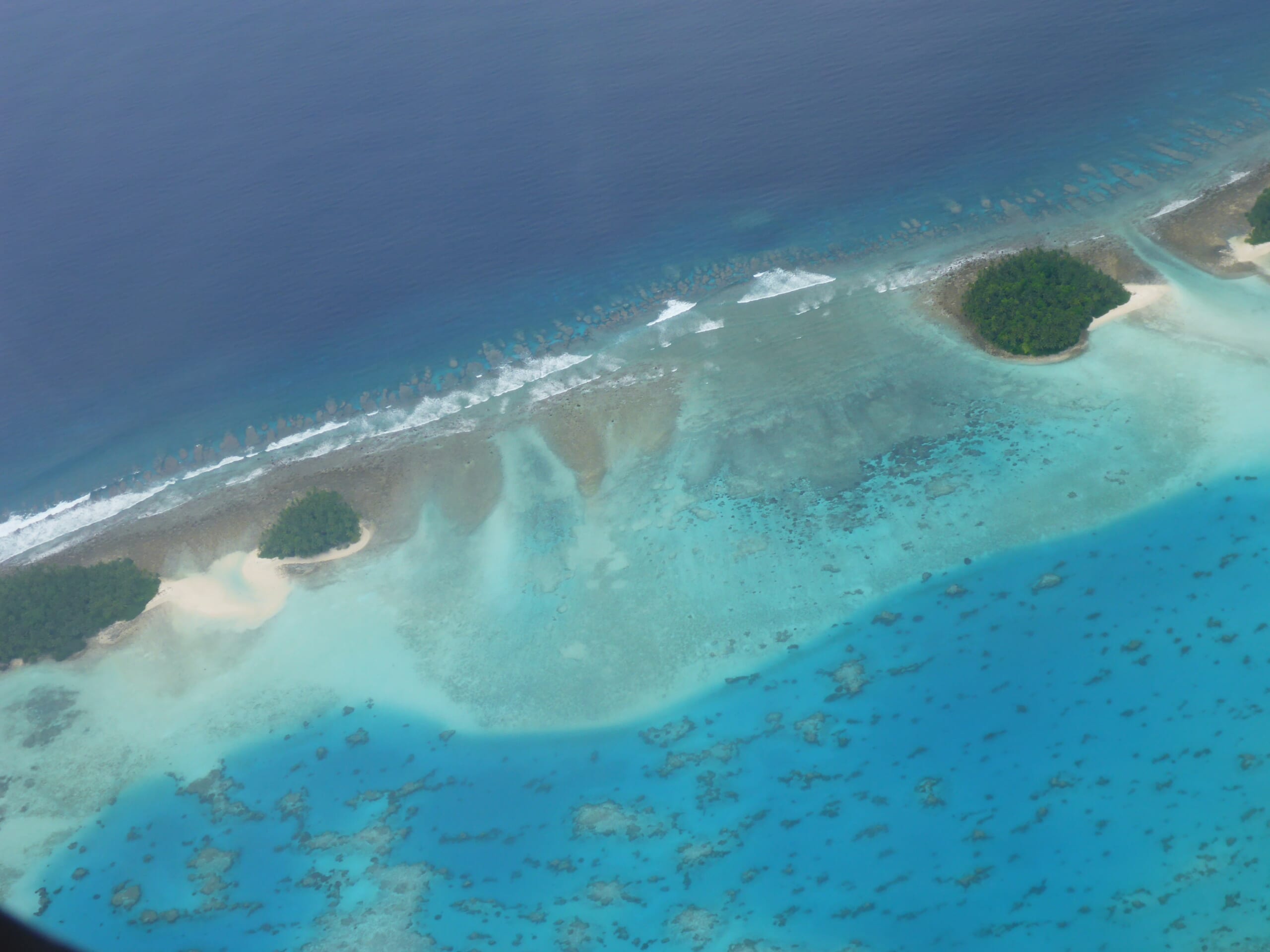 気候変動に伴う海面上昇によって消滅すると考えられてきた太平洋の島しょ国ツバルは、実は国土面積が拡大していたとする研究論文が発表された。
気候変動に伴う海面上昇によって消滅すると考えられてきた太平洋の島しょ国ツバルは、実は国土面積が拡大していたとする研究論文が発表された。
ツバルでは世界平均の2倍のペースで海面上昇が進んでいるにもかかわらず8つの環礁と、約4分の3の岩礁で面積が広くなっており、同国の総面積は2.9%拡大していたことが判明した。波のパターンや嵐で打ち上げられた堆積物などの要因によって、海面上昇による浸食が相殺された可能性があるという。
気候変動が依然として低海抜の島国にとって大きな脅威であることに変わりはないが、気候変動への対処の仕方については考え直す必要があるのかもしれない。
「沈みゆく島国」ツバル、実は国土が拡大していた 研究
AFP
2018年2月10日
https://www.afpbb.com/articles/-/3161922
気候変動に伴う海面上昇によって消滅すると考えられてきた太平洋の島しょ国ツバルは、実は国土面積が拡大していたとする研究論文が9日、英科学誌ネイチャー・コミュニケーションズ(Nature Communications)に発表された。
ニュージーランドのオークランド大学(University of Auckland)の研究チームは航空写真や衛星写真を使用し、ツバルの9つの環礁と101の岩礁について1971年から2014年までの地形の変化を分析した。
その結果、ツバルでは世界平均の2倍のペースで海面上昇が進んでいるにもかかわらず8つの環礁と、約4分の3の岩礁で面積が広くなっており、同国の総面積は2.9%拡大していたことが判明した。
論文の共著者の一人ポール・ケンチ(Paul Kench)氏によると、この研究は低海抜の島しょ国が海面上昇によって水没するという仮説に一石を投じるものだという。
波のパターンや嵐で打ち上げられた堆積物などの要因によって、海面上昇による浸食が相殺された可能性があるという。
オークランド大学の研究チームは、気候変動が依然として低海抜の島国にとって大きな脅威であることに変わりはないと指摘する一方、こうした問題への対処の仕方については再考すべきだと論じている。
同チームは、島しょ国は自国の地形の変化を考慮に入れたクリエーティブな解決策を模索して気候変動に適応していかなければならないと指摘し、海面が上昇しても安定していることが分かっており、これからも面積が増えていくとみられる比較的大きな島や環礁への移住などを提唱している。
Tuvalu’s no shrinking violet
Australian Science Media Centre Inc.
9 Feb 2018
https://www.scimex.org/newsfeed/tuvalus-no-shrinking-violet
Those worried about the sea level rise submerging the tiny Pacific island nation of Tuvalu can rest easier, it’s actually been gaining land area in the past 40 years, according to research from the University of Auckland. The researchers mapped the shoreline of each of Tuvalu’s 101 islands over a 40-year period and found that there’s been a three per cent (73.5 hectares) increase in land area, with 73 islands larger than they were in the 1970s. This seems counterintuitive because sea level rise has been happening at twice the global average in this area, so the researchers say this indicates that atolls like those in Tuvalu are more geologically active than we thought and that Tuvalu will continue to be habitable a century from now.
Media Release
From: University of Auckland
Land area of low-lying Tuvalu has increased
The tiny Pacific island nation of Tuvalu, thought to be under threat from sea level rise, has actually expanded in land area over the past 40 years and is likely to continue to be habitable a century from now, scientists say.
New research from the University of Auckland published today in Nature Communications mapped shoreline change of each of Tuvalu’s 101 islands across its nine atolls over a 40-year period.
Eleven of the remote and sparsely populated country’s islands have a permanent human population, two have a population of more than 600.
The research team, including Professor Paul Kench, Dr Murray Ford and Dr Susan Owen from the School of Environment, used aerial photos going as far back as 1943, and photo collections from 1971 and 1984 with updated satellite imagery from 2004-2014, to compare how the shoreline of each atoll changed between 1971 and 2014.
Mapping of island size and position shows that Tuvalu has experienced a net increase in land area of 2.9 percent or 73.5ha. Overall 74 percent of islands in the group – a total of 73 – are larger now than forty years ago.
Yet sea level rise in the region has been happening at twice the global average over the past 40 years.
“We tend to think of Pacific atolls as static landforms that will simply be inundated as sea levels rise but there is growing evidence these islands are geologically dynamic and are constantly changing,” says Professor Kench.
Tuvalu has long been considered one of the low-lying Pacific nations at threat from sea level rise caused by climate change and over the 40-year period of the study, local sea levels rose at twice the global average.
“The study findings may seem counterintuitive given that sea level has been rising in the region over the past half century, but the dominant mode of change over that time on Tuvalu has been expansion, not erosion.”
Professor Kench says sea level is just one factor that can influence island change. A range of environmental processes have contributed to that pattern including sediment supply and wave patterns.
Those processes, particularly during extreme events such as Cyclone Bebe in 1972, could account for the expansion of larger mixed sand-gravel islands and gravel islands, while smaller islands which are predominantly sand are more likely to have been destabilised, he said.
“On the basis of this research we project a markedly different trajectory for Tuvalu’s islands over the next century and while we recognise that habitability rests on a number of factors, loss of land is unlikely to be a factor in forcing depopulation of Tuvalu.”
Historic patterns of human settlement based on legacies of economic and social investment may not be well aligned with the physical changes occurring in the islands, says Prof. Kench.
Rather than simple re-location or migration, new adaptations could be considered that involve the community in decision-making on issues of planning, development goals and land tenure systems that take into account the dynamic nature of islands.